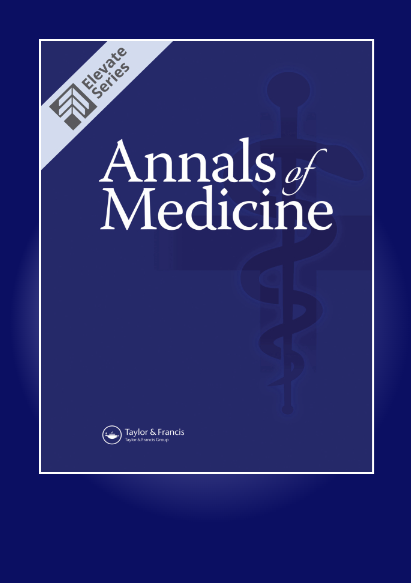Serum metabolomics profile identifies patients with community-acquired pneumonia infected by bacteria, fungi, and viruses.
IF 4.3
2区 医学
Q1 MEDICINE, GENERAL & INTERNAL
引用次数: 0
Abstract
PURPOSE Patients with bacterial, fungal, and viral community-acquired pneumonia (CAP) were studied to determine their metabolic profiles. METHODS Loop-mediated isothermal amplification technology and nucleic acid sequence-dependent amplification combined with microfluidic chip technology were applied to screen multiple pathogens from respiratory tract samples. Eighteen patients with single bacterial infection (B-CAP), fifteen with single virus infection (V-CAP), twenty with single fungal infection (F-CAP), and twenty controls were enrolled. UHPLC-MS/MS analysis of untargeted serum samples for metabolic profiles. Multiple linear regression and Spearman's rank correlation analysis were used to determine associations between metabolites and clinical parameters. The sensitivity and specificity of the screened metabolites were also examined, along with their area under the curve. RESULTS The metabolic signatures of patients with CAP infected by bacteria, viruses, and fungi were markedly different from those of controls. The abundances of 45, 56, and 79 metabolites were significantly unbalanced. Among these differential metabolites, 11, 13, and 29 were unique to the B-CAP, V-CAP, and F-CAP groups, respectively. Bacterial infections were the only known causes of disturbances in the pentose and glucuronate and aldarate and ascorbate metabolism interconversions metabolic pathway. CONCLUSIONS Serum metabolomic techniques based on UHPLC-MS/MS may identify differences between individuals with CAP who have been infected by various pathogens, and they can also build a metabolite signature for early detection of the origin of infection and prompt care.血清代谢组学图谱可识别受细菌、真菌和病毒感染的社区获得性肺炎患者。
目的对细菌、真菌和病毒性社区获得性肺炎(CAP)患者进行研究,以确定他们的代谢特征。方法应用环介导等温扩增技术和核酸序列依赖性扩增技术结合微流控芯片技术从呼吸道样本中筛选多种病原体。共纳入 18 例单一细菌感染(B-CAP)患者、15 例单一病毒感染(V-CAP)患者、20 例单一真菌感染(F-CAP)患者和 20 例对照组。对非目标血清样本进行超高效液相色谱-质谱/质谱分析,以了解代谢概况。采用多元线性回归和斯皮尔曼等级相关分析来确定代谢物与临床参数之间的关联。结果受细菌、病毒和真菌感染的 CAP 患者的代谢特征与对照组明显不同。45、56 和 79 种代谢物的丰度明显不平衡。在这些不同的代谢物中,分别有 11、13 和 29 个是 B-CAP、V-CAP 和 F-CAP 组所特有的。结论基于超高效液相色谱-质谱/质谱(UHPLC-MS/MS)的血清代谢组学技术可识别受各种病原体感染的 CAP 患者之间的差异,还能建立代谢物特征,以便早期发现感染源并及时治疗。
本文章由计算机程序翻译,如有差异,请以英文原文为准。
求助全文
约1分钟内获得全文
求助全文
来源期刊

Annals of medicine
医学-医学:内科
CiteScore
4.90
自引率
0.00%
发文量
292
审稿时长
3 months
期刊介绍:
Annals of Medicine is one of the world’s leading general medical review journals, boasting an impact factor of 5.435. It presents high-quality topical review articles, commissioned by the Editors and Editorial Committee, as well as original articles. The journal provides the current opinion on recent developments across the major medical specialties, with a particular focus on internal medicine. The peer-reviewed content of the journal keeps readers updated on the latest advances in the understanding of the pathogenesis of diseases, and in how molecular medicine and genetics can be applied in daily clinical practice.
 求助内容:
求助内容: 应助结果提醒方式:
应助结果提醒方式:


